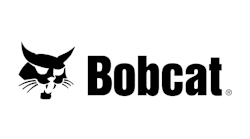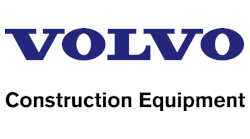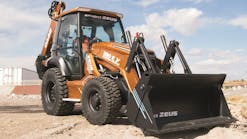Last Friday afternoon an e-mail came in about the future of the Dartmouth football program. Big Green football had been using a device to reduce the risk of injuries to players during practice and the press release spoke of taking the initiative to the nth degree. Human players would no longer take the field. Instead robots would take their place.
This, of course, was an April Fools’ Day prank. But it did display a willingness to think outside of the box, as well as a willingness to turn to technology for the answers to some of the problems and questions we’ve had. It also spoke to me that perhaps a bit of creativity and a sense of humor (warped, sophomoric, or otherwise) could lead to solutions.
The problems, questions, and solutions have to do with solving the current state of the nation’s infrastructure. For the past few weeks I’ve been blogging about Infrastructure Week (May 16–23) and the four questions about infrastructure issues that were sent to industry executives and experts.
We’ve heard from Association of Equipment Manufacturers president, Dennis Slater. Last week Dan Donovan, the director of road demolition sales for Volvo Construction Equipment North America, provided answers. This week the director of public affairs for John Deere Construction and Forestry, Candace Schnoor, answers the short questionnaire.
Grading & Excavation Contractor (GX): Which infrastructure projects should be given priority? Roads and bridges? Dams and levees? Water supply? Electrical grid?
Candace Schnoor (CS): All of this infrastructure is essential to our quality of life, and it should be a priority to ensure it is maintained and upgraded. We count on these systems to provide for our most basic needs, keep our communities safe, and grow the economy. John Deere is in a unique position to provide equipment to customers who build and maintain critical infrastructure, and to customers who help feed a growing world.
GX: Is there a solution to long-term infrastructure funding?
CS: We need more public and private dollars invested in infrastructure. There is no single answer to solve this significant problem and years of underinvestment. In an era of strained budgets and scarce resources, all options for increased investment should be considered. There are many ways to close the gap over the long term, including increased public funding, grants and federal loans, public private partnerships, private activity bonds, and infrastructure banks. Above all, we are in need of demonstrated leadership and courage by our elected officials to make tough decisions on behalf of the American people.
Officials at all levels of government should ensure that public money invested in infrastructure is spent wisely, by ending waste, bureaucratic delays, and targeting funds for the highest priority projects with the most public benefit.
GX: What kind of harm is the current state of our infrastructure doing to the economy and the community?
CS: An outdated infrastructure limits economic growth. Reliable infrastructure is a key component for businesses when determining where to locate, particularly for manufacturers like John Deere. Costs increase when supplier inputs or finished goods are delayed in transit—trade is slowed, competitiveness is threatened.
Nearly all of the locks on the Mississippi River are more than 50 years old. According to aggregate companies who depend on barges for shipping, it is not uncommon for a tow to sit two or three days waiting to get through some of the locks! This is not good news for those who count on goods movement through our inland waterways. Numerous other examples of bottlenecks exist at US ports and surface transportation hubs.
On the contrary, infrastructure investments lay the groundwork for future economic growth, and in the process generate good-paying jobs and tax revenue. For example, a Clean Water Council study found that every $1 billion invested in water and wastewater infrastructure creates up to 30,000 new jobs with average annual earnings of more than $50,000.
GX: What can various government entities—from local to federal—do to attract private sector support and investment?
CS: Remove statutory barriers at the federal and state level, which limit private investment in infrastructure. Streamline the permitting and review processes for new projects and upgrades to existing projects. This would help reduce costs and delays, and provide certainty for potential investors. Currently, federal, state and local project and permit reviews are required by multiple governmental agencies. The result is several years of what can often be duplicative reviews. There has to be a better way.
GX: Thank you, Candace.
Next week a vice president from CASE Construction Equipment will answer our four infrastructure questions.
These issues go well beyond grading and excavation. All of Forester’s publications, Stormwater, Erosion Control, Business Energy, Water Efficiency, and MSW Management have asked the same four questions of their various industry executives and experts. All of the discussions will be revealed here on the Forester Network leading up to Infrastructure Week 2016.
Join the discussion by adding a comment below.









